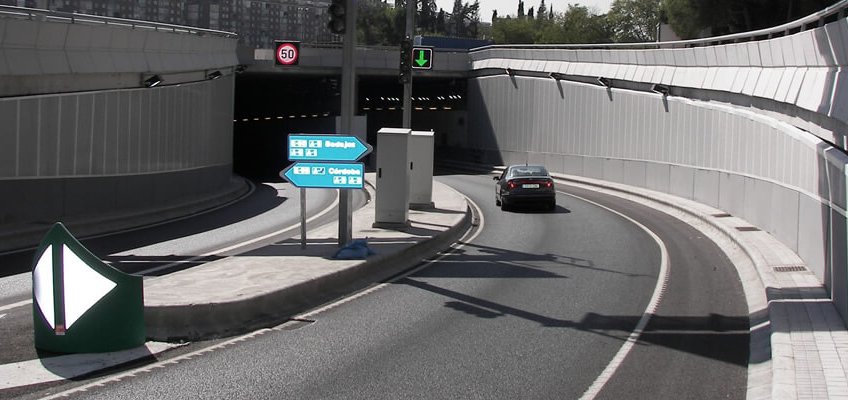
Safety. Traffic fluidity. Comfort. Sustainable driving. These four concepts may well summarise what the tunnels of the M-30 mean for our drivers.
A cutting-edge and innovative road network with a new urban design that brings 30 hectares of land back to the residents of Madrid.
The tunnels are 48 kilometres long and have an area of almost 500,000 m2, achieving the following advantages:
Our priority in EMESA is to achieve the highest safety in the tunnels. For this we have the most advanced technologies and the best human team.
Our challenge is to provide a swift and effective incident response. When an incident occurs, it is notified to the control software for validation by the Control Centre operators, which are responsible for managing and monitoring traffic evolution, tuning the devices and detecting any anomalies in the system, as well as incidents in the tunnels. In addition, the Control Centre is in charge of coordinating the emergency services involved in road safety (SAMUR, Fire and City Police) via our CCTV.
The camera system allows the operator to confirm the incident and rule out possible false alarms. Once the Control Centre operators have validated the incident, they report both its characteristics and the updated tunnel conditions. We have a Traffic Incident Management Service that is responsible for acting on all types of situations that may occur in the tunnels, with accident response times of less than 6 minutes. To do this, we have 4 bases located at the tunnel entrances and do surveillance rounds 24 hours a day, 7 days a week.
The M30 Tunnels feature two different ventilation systems:
In case of fire, the system detects the lack of visibility due to inhibited smoke and automatically activates the ventilation. In addition, the tunnels have complete fire protection equipment with equipped fire hydrants and fire extinguishers, hydrant network and dry columns. The galleries that run along the south bypass are used by emergency services and EMESA staff, thus facilitating the evacuation of people.
Both galleries are interconnected via watertight doors every 100 metres and equipped with pressurised independent lobbies that prevent the passage of fire and smoke from one tunnel to another. In addition, there are pedestrian connections between the tunnels every 200 metres.
The human team at EMESA supervises the perfect maintenance and operation of the tunnels.
The M-30 tunnel in figures:
We also have more than 100,000 metres of optical fibre cable to control and maintain:
In 2003, a great challenge was taken on: changing the structure, lifestyle and landscape of the city of Madrid. Therefore, 2004 marked the beginning of the comprehensive transformation works of the M30 through 17 major projects. A planned and coordinated action that at times gathered 5,000 workers simultaneously.
State-of-the-art machinery was used, such as the two largest tunnel boring machines in the world (Dulcinea and Tizona) capable of drilling and covering the subsoil of the M30 at speeds of up to 46 metres per day. The human team and the best technologies managed to build the south bypass and the underground section along the Manzanares river, which together make up the longest urban tunnel in the world.
This fact has turned EMESA into a global benchmark, with engineers and architects from all over the world coming to study our structure, and it has allowed us to be part of the Road Technical Association and the World Road Association, and to collaborate with the technological development of the European Union.